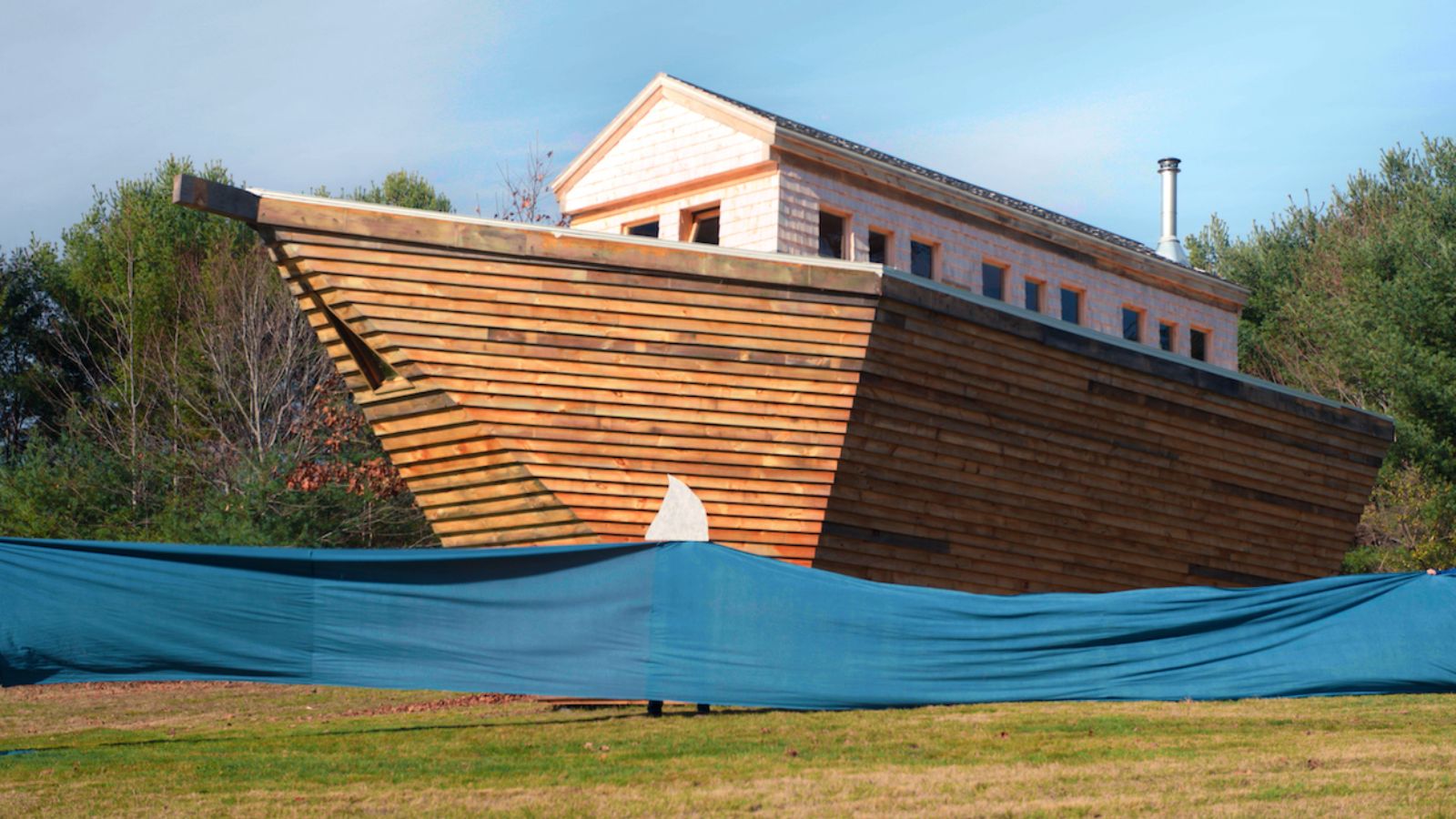Beginning with the thesis statement “does anything really last,” Ian Chaney’s obsessive inquiry The Arc of Oblivion wonders if the act of archiving is really a folly. This leads to exploring natural methods of archiving around us, from limestone layers to synthesizing digital data into DNA. Chaney starts with a problem facing indie filmmakers and obsessive autobiographers: hard drives and digital video fail easily. Although not explored by Chaney, master filmmakers like Martin Scorsese insist on making physical 35mm prints of films they shot digitally and storing them in salt mines rather than on corruptible servers or digital physical media.
A sweeping, often playful odyssey, The Arc of Oblivion seeks out expert help in exploring the nature of archiving, including the gatekeepers who decide what is important to keep record of. Haunted by the spirit of lost footage he filmed one evening while on his parents’ farm––while he commissioned the construction of an arc on their land in Maine––he starts to explore the act of archiving through nature, nano science, and in art.
Amongst the travelers he encounters are a dendrochronologist, a conceptual biologist, a ceramist, and several specialists and enthusiasts in Maine who speculate on the history of local limestone and trees. Artifacts from ancient civilizations do still exist; in Austria, Chaney meets with a ceramist who is casting plates of important facts.
Still, certain artifacts made of stone and concrete (e.g. tombstones) vanish each year, and photographers Bryan Palmer and Erin Holloway set about to document and photograph the vanishing cemeteries of the Jim Crow south. Chaney, concerned about the shelf life of a digital photograph on a hard drive, prints out a simple cell phone photo on 300 pages of binary computer code featuring zeros and ones. Others, like Robert Friedman, are attempting to build an archive of everyone who has ever lived; perhaps this is all subjective, as archives are the ultimate hallmark of power.
For Chaney this journey is highly personal. In one passage he collaborates with his brother and sister to create work inspired by their father’s barn, a multi-media archive in sound, image, video. The Arc of Oblivion is as much performance as personal inquiry, sidestepping some politics inherent in archiving––who decides what is archived, where it resides, how is it cared for. This is apparent on a trip to an ancient, badly damaged manuscript archive in Mauritania, itself housed in a building sans sophisticated climate controls. Here we learn of an old proverb: “When an old African dies, a whole library dies”.
Along the way Chaney also checks in with filmmakers––among them Cameraperson director Kirsten Johnson, who opines that the presence of a movie camera is like a letter to the future. The film’s executive producer Werner Herzog, who famously destroys footage after he’s locked picture, also visits the landlocked arc, reminding us that we might not always want to remember everything. For Herzog, oblivion––and the selective memory of humans––is a blessing. The wise sage doesn’t understand why anyone would wish to remember every event in one’s life.
A sweeping journey that bounces between continents and archival media, Arc of Oblivion is fascinating as a personal adventure for not staying in one place very long. The picture casts an obsessive, questioning tone as Chaney wonders first why he’s photographing a small TV by a stream, recalling the story of Gilgamesh. Like the late Tony Conrad’s Yellow Movies series, which technically has a running time that just crossed 50 years, no matter how well an artifact is taken care of it’s always subject to external forces of nature or man. While any passage itself could make a compelling short, it’s largely held together by the curiosity of its maker and the tangents of interest to him as a family man of a certain age when friends, family, and those close to us start slowly fading away at a quicker pace.
The Arc of Oblivion premiered at SXSW 2023.

